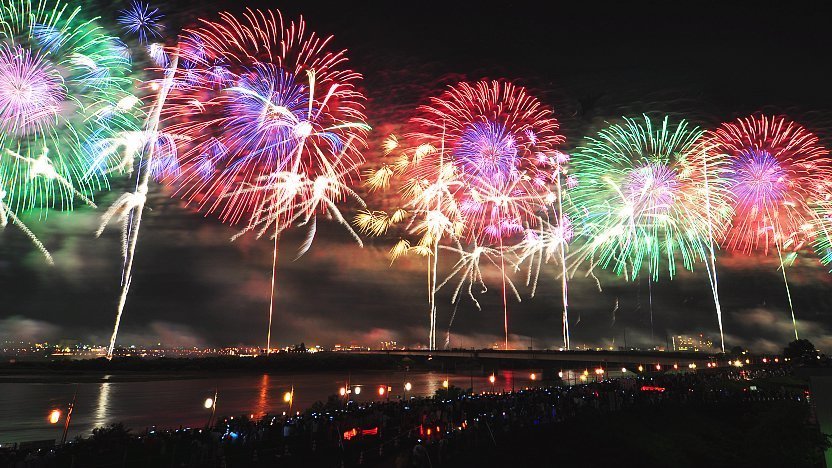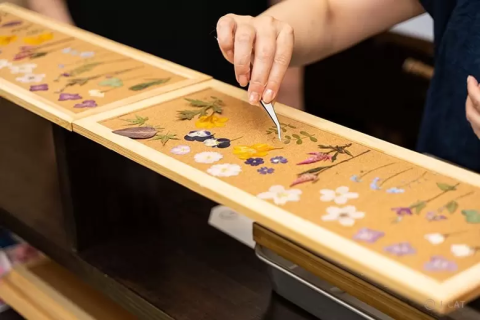Japan is a country where tradition and modernity coexist in perfect harmony. With each season offering unique cultural experiences, visitors can immerse themselves in timeless rituals, festivals, and natural beauty that reflect Japan’s deep connection to nature and its rich history. Whether it’s the pink blush of spring’s cherry blossoms or the serene snowfall of winter, there’s always something magical to explore.
Table of Contents
Spring: A Celebration of Renewal
Cherry Blossom Viewing (Hanami)

Spring in Japan is synonymous with hanami, the traditional custom of cherry blossom viewing. Both locals and visitors go to parks like Tokyo’s Ueno Park and Kyoto’s Maruyama Park. Underneath a canopy of sakura, families and friends gather for picnics, enjoying seasonal delicacies like sakura mochi and sake. The cherry blossoms symbolize the fleeting nature of life, a concept deeply rooted in Japanese philosophy.
Traditional Tea Ceremonies

Spring tea ceremonies offer a serene cultural experience. Seasonal tea blends are crafted to reflect the freshness of spring, often infused with hints of cherry blossom. Cities like Kyoto and Kanazawa host traditional tea houses where visitors can participate in this centuries-old ritual, guided by skilled tea masters.
Spring Festivals

Spring in Japan also heralds vibrant festivals. The Aoi Matsuri in Kyoto showcases elaborate processions and Heian-period costumes, while the Takayama Spring Festival features intricately designed floats paraded through the streets.
Summer: Vibrancy and Festivities
Fireworks Festivals (Hanabi)

Nothing captures the essence of Japanese summer like hanabi. Rooted in the Edo period, fireworks festivals are held across the country. Events like the Sumida River Fireworks in Tokyo and the Nagaoka Fireworks Festival in Niigata offer dazzling displays that light up the summer sky.
Gion Matsuri in Kyoto

The Gion Matsuri is a month-long festival in Kyoto, known for its grand processions of ornate floats and lively street events. This festival embodies the spirit of community and tradition, attracting millions of visitors annually.
Traditional Yukata Wear

Summer is the perfect time to don a yukata, a lighter and more casual version of the kimono. Many rental shops in Kyoto and Tokyo allow visitors to experience this traditional attire, ideal for attending summer festivals and fireworks shows.
Coastal Activities and Traditions

Japan’s coastal regions come alive during summer with beach festivals and Obon dances. The Obon festival is a time to honor ancestors through traditional dance, music, and lantern floating ceremonies.
Autumn: A Tapestry of Colors
Autumn Foliage Viewing (Momiji)

As the leaves turn crimson and gold, Japan transforms into a breathtaking landscape. Popular spots like Arashiyama in Kyoto and Nikko in Tochigi are perfect for momiji viewing. The changing leaves symbolize the beauty of impermanence, much like the cherry blossoms of spring.
Harvest Festivals

Autumn is also a time for celebrating bountiful harvests. The Niiname-sai ceremony, held at Shinto shrines, gives thanks for the year’s rice harvest. Seasonal foods such as roasted sweet potatoes and matsutake mushrooms are staples of this period.
Art and Craft Workshops

Autumn is ideal for engaging in traditional crafts. Workshops in pottery, washi paper making, and indigo dyeing are popular among tourists looking to take home a handmade souvenir.
Winter: Serenity and Reflection
Illuminations and Light Festivals

Japan’s winters are enchanted by their brilliant lights. The Nabana no Sato Winter Illumination in Mie and Tokyo Midtown’s light displays draw millions of visitors, creating a fairy-tale-like atmosphere.
Onsen (Hot Springs) Experience

There’s nothing more rejuvenating than soaking in an onsen while surrounded by snow. Places like Hakone and Kusatsu are renowned for their hot springs, while the Jigokudani Monkey Park in Nagano offers the unique sight of snow monkeys bathing in natural hot springs.
New Year Traditions (Oshogatsu)

Japan’s New Year celebrations are steeped in tradition. Families visit temples and shrines for Hatsumode, the first prayer of the year. Special foods like osechi ryori and mochi are enjoyed, symbolizing prosperity and health for the coming year.
Also visit:
Plan Your Adventure: Top Hiking Trails in Colorado for Weekend Getaways
The Most Scenic Top Hiking Trails in Colorado for Stunning Views
Explore Beyond Rome and Venice: Hidden Gems in Italy
Hidden Gems in Italy: Your Guide to Offbeat Adventure
Hidden Germs in Italy: Unique and Undiscovered Places
The Best Beaches in Florida for Nature Lovers
Conclusion
Japan provides a wealth of cultural experiences all year long, from the fleeting splendour of spring blossoms to the comforting warmth of winter onsens. It is a place worth visiting at any time of year because each season has its own unique appeal. By immersing yourself in these traditions, you not only explore Japan’s rich heritage but also gain a deeper appreciation for its unique way of life.




